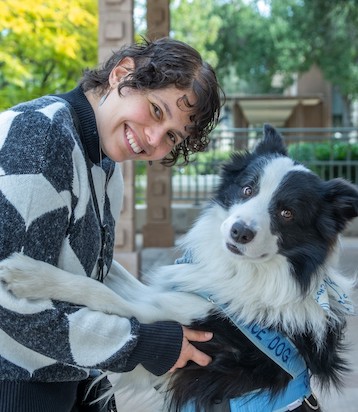Alicia O. Hernandez-Castillo

Assistant Professor of Chemistry
B.S. Universidad Nacional Autónoma de México
PhD, Purdue University
My group uses spectroscopy to understand intermolecular interactions; that is, the way two molecules “touch” one another. These interactions are of importance in understanding a wide range of chemically relevant processes, including solvation effects, molecular recognition, and molecular aggregation. To characterize these interactions, we record ground and excited state spectra in the gas phase. We then use quantum chemical calculations and computational simulations to understand our spectra.
To record our high-resolution rotational spectra, we have built a state-of-the-art chirped pulse Fourier transform microwave (CP-FTMW) spectrometer. These spectra are exquisitely sensitive to the positions and orientations of the two molecules relative to each other. Thus, we can unambiguously distinguish between binding arrangements and understand how the targeted molecules interact with one another. In addition, we can use the observed intensity ratios of the rotational transitions to determine the isomeric fractional abundances in cases where more than one binding arrangement is possible. We are currently in the process of building a time-of-flight mass spectrometer to record electronic spectra of our molecules. You can follow our adventures on Twitter at @HMC-MolSpecGroup.